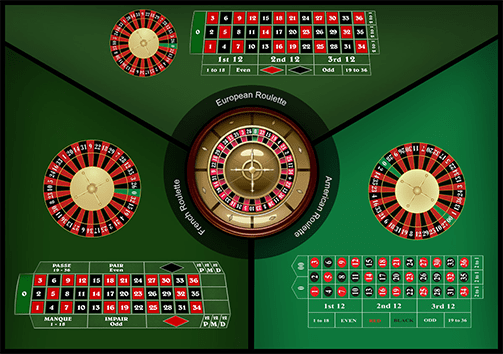

The Roulette Wheel
The roulette wheel is the central element to any roulette game, be that in a brick and mortar casino or online. New players to the game are often unsure as to how many numbers on a roulette wheel there actually are or even how the wheel layout looks from one game to another. In this Play UK guide to understanding the roulette wheel, we show you how the wheel layout works, along with variations of the wheel. Discover the fascinating history behind the roulette wheel and meet its inventor. Once you understand just how the wheel is designed to work, you will begin to see more roulette betting possibilities than ever before!
History of the roulette wheel
We’ve all heard the argument about which came first, the chicken or the egg, something that has been debated for centuries. While that answer may always be a mystery, one thing is for sure, in roulette the wheel definitely came first! Roulette is believed to be one of the oldest casino games in the world and its history stretches back to the 1700’s in Europe, where the game as we know it was born. The story of roulette’s birth is quite an interesting and somewhat amusing since its inception was purely accidental. As the popular story goes, a famous French mathematician discovered the wheel purely as a by-product of his attempts at creating the world’s first perpetual motion machine.
When the game was first introduced in fashionable gambling houses around Paris, people were fascinated with the wheel. Before the introduction of the roulette wheel and table, card and dice games had been the order of the day. Suddenly players could now gather around the roulette table, watch as a numbered wheel, with alternating red and black colours was spun, and a tiny metal ball was, in turn, spun along the rim of the wheel in the opposite direction.

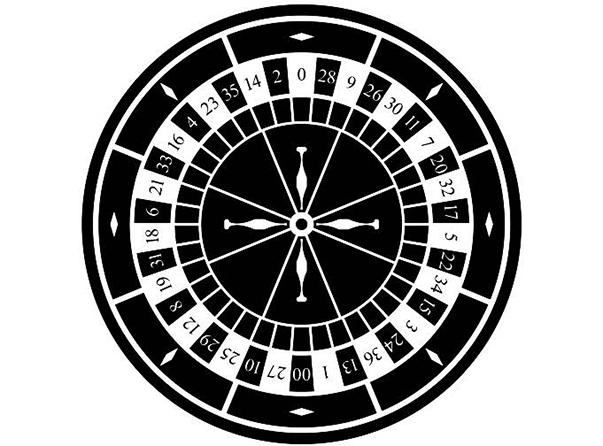
The original French roulette wheel had 36 numbered pockets as well as two additional pockets which were numbered “0” and “00”. Players could place a bet on a single number or several, all with different odds of winning. However, the two zero positions were known as the house pockets and, if the ball landed in either of them, the house would win. At this early stage, all pockets were painted in an alternating pattern of red and black, even the house pockets. Eventually, players began to complain that it was too tell when the ball had landed in one of the dreaded house pockets. A new and improved wheel was introduced sporting a different colour for the house pockets in either blue or green, resolving the issue for good.
With French colonies firmly established in the New World, the game of roulette made the journey to North America towards the end of the 19th century. The game was an immediate hit in places like Louisiana and was played extensively up and down the Mississippi River, where steamboat casinos plied their trade in sophisticated casino games.
Meanwhile, back in Europe trouble was brewing for roulette as Germany moved to ban gambling altogether. Casino operators such as the Blanc Brothers decided to head to Monte Carlo where the king was eager to establish a casino. The roulette wheel was the perfect attraction to Monaco’s first casino and it soon became the place to be for serious roulette players. In a bid to make the game even more popular, the Blanc brothers removed the double zero, keeping only the single zero position, which improved the roulette wheel odds significantly. Interestingly this new version of the wheel became known as the French roulette wheel, and later, the European roulette wheel (which removed the original French bets), while the roulette wheel in America kept the two zero position wheel and thus became known as the American roulette wheel.
Who invented the roulette wheel?
There is some controversy regarding this question as some will tell you that no one really knows for sure who actually invented the roulette wheel. However, the most popular and most consistent theory, which most players and experts ascribe to, is that the wheel was invented accidentally. A very famous French mathematician and scholar named Blaise Pascal was working on developing the world’s first perpetual motion machine. Pascal spent years developing various prototypes and working models, without much success. However, his most successful failure resulted in the roulette wheel that we know today. The roulette wheel layout and numbering system are also credited to him in most circles, which does make a fair amount of sense considering that he was a mathematician after all.

Roulette Wheel Layout
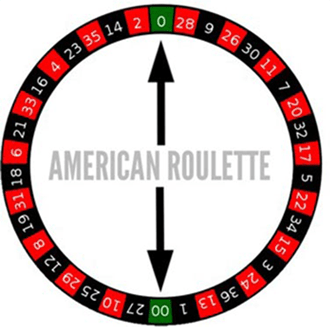
Have you ever wondered how many numbers on a roulette wheel there are, or if knowing the roulette wheel layout really make any difference to the outcome of your bet?
Well, you may be surprised to learn that there is, in fact, a difference between the American and the European roulette wheel. And, while it may be true that, at the end of the day, roulette is all about lady luck smiling down on you, knowledge is power. Knowing how a roulette wheel works and how it is structured could nevertheless help you to place sensible bets that work nicely in concert with your newly acquired roulette strategy.
Making a roulette wheel selection is a bit easier once you understand the layout of the roulette wheel itself. Every roulette wheel consists of a number of alternating segments, usually red and black. The reason that the roulette wheel alternates in these colours is so that any player who wishes to make easy ‘outside bets’ (betting on a colour is an example of outside betting) can do so easily, regardless of where they are at the table.
All roulette wheels work on the same structural and kinetic principles, regardless of whether they happen to be the French, European or American versions. There are basically five main components that make up any roulette wheel and work together to produce that wonderful mesmerizing spinning wheel and the ensuing sense of anticipation, waiting for it to stop on someone’s lucky number.
Let’s start with the ball track, which some say is the most important part and is really what gets everyone really excited. This is where the croupier (dealer) ‘shoots’ the ball along the rim of the wheel, as the wheel spins in the opposite direction. The ball travels around and around, at first fast and then slowing down. Perhaps this is where the saying ‘get the ball rolling’ comes from. As the ball starts to slow and lose some momentum, it starts to knock against small diamond-shaped metal studs known as deflectors. The idea behind the deflectors, which are evenly spaced around the track, is that they ensure that there is absolutely no control over where the ball lands in the end.
After getting knocked around by the deflectors for a bit, the ball falls into the lower track which is closer to the ‘wheel head’ where all the numbered pockets are placed around the wheel. Eventually, the ball will actually start to bounce in and out of number pockets along the wheel head as the wheel continues to spin, although slowing down at this point. As the wheel eventually comes to rest, the ball will naturally fall into one of the numbered pockets for the last time, giving everyone around the table the result for that round.
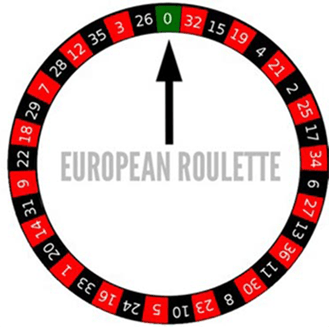
How it works in perpetual motion
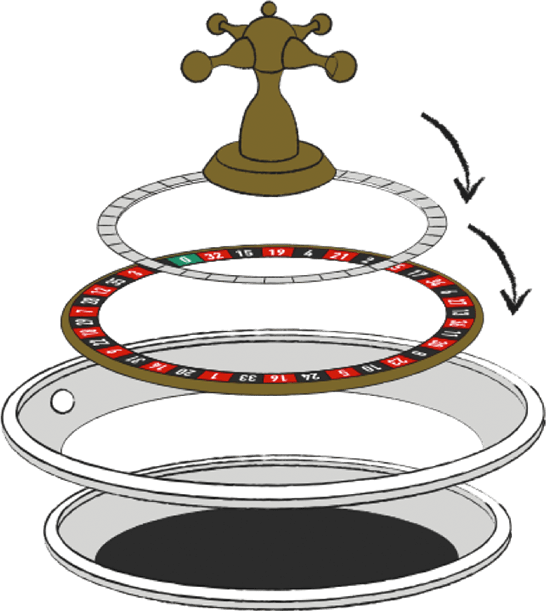
Perhaps somewhat ironically, while the original inventor of the roulette wheel's quest to create the world’s first perpetual motion machine failed, today’s brick and mortar casino roulette wheels rely on perpetual motion extensively. This is often a bit of a surprise to roulette players who may be accustomed to playing roulette online UK where the wheel does not follow perpetual motion.
The main reason for the need for the roulette wheel to be in perpetual motion in brick and mortar casinos is so that no one can accuse the house of cheating. The roulette wheel is kept in a state of perpetual motion so that any notion that the croupier is influencing the outcome of the results by either spinning the roulette wheel too slowly or too fast, can be eliminated.
With online casino roulette wheels, the wheel is controlled digitally by software, and every spin is precisely consistent, with the outcome controlled by a sophisticated random number generator. The other added benefit of a wheel in perpetual motion in a brick and mortar casino is that it makes for a much faster and much smoother roulette game experience since the wheel does not have to be started or stopped for every round.
While the roulette wheel is essentially the same at its core, there are a few subtle differences between the variations. The most well-known of these is between the American roulette wheel and the European version. The French and European roulette wheel are identical, with the only real differences between these two actually occurring on the roulette tables.
The French and European roulette wheels consist of 37 segments, which equate to 36 numbers and a single zero number. The 36 numbers alternate in red and black while the zero position is marked green so everyone can see it clearly. The same can be said for the American roulette wheel with the exception of the additional double zero position, giving the American roulette wheel a total of 38 segments. It is essentially the double zero on the American roulette wheel that pushes the house edge up to more than double that of European roulette’s single zero wheel and a lot of players find it harder to win at roulette on the American wheel thanks to a 5.26% house edge.
Another popular variation on the roulette wheel is mini roulette, where the wheel is reduced to half its size, both in terms of dimensions and based on the number of available slots. The mini roulette wheel features just 13 slots and a single zero position and with a house edge of 3.85%, putting it in between European roulette and American roulette. Put your new found understanding to the test at one of our great live dealer roulette games today!
